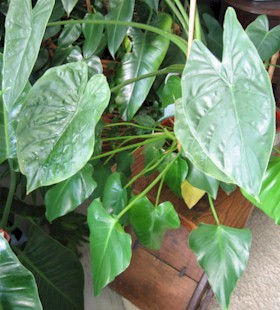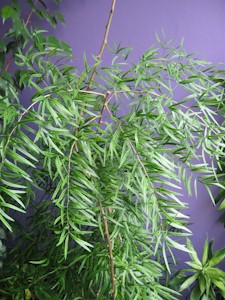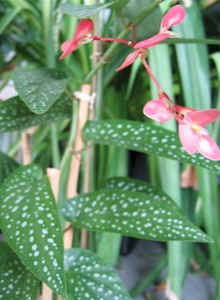|
Miscellaneous |
|
| This page gathers miscellaneous plants which are also parts of my collection. All have in common that they originally come from tropical areas. Some species are really common, such as chlorophytum or yucca, although some others may appear more singular, such as tetrastigma or pandanus. |
| Aglaonema spp. |
|
 |
Alocasia usually
require a high humidity
level, and this sample probably limits its growth to cope with a dry
environment. |
 |
|
Alocasia spp. |
|
| Asparagus falcatus |
|
 |
This asparagus falcatus
produces one new
stem annually. It is recommended to cut new stems when they reach expected
height, in order to prevent them from growing infinitely, without producing leaves.
|
 |
It is true that aspidistra elatior
is
particularly an easy plant. It satisfies to harshest conditions, while
growing desperately slowly. |
|
|
Aspidistra eliator |
|
| Begonia corallina |
|
 |
|
|
|
Callisia repens |
|
| Chlorophytum comosum |
|
| The 'granny' of the collection, this
chlorophytum comosum is 5 years old, and still lives on, although it was never repotted for 5
years ! It also gave birth to many clones, as one can imagine.
|
|
|
Heptapleurum arboricola |
|
| Pandanus veitchii |
|
 |
It is not that easy to grow pandanus veitchii successfully in a living-room. This plant enjoys hight humidity and abundance of water. These two samples have difficulties to settle indoor and suffer mostly from dry air. |
|
| Tetrastigma voinierianum |
|
|
Certainly the best vine for indoor
gardening, tetrastigma voinierianum combines beauty, fast growth and
adaptability to various conditions. This young sample does well behind a
window oriented south, protected from direct sunlight by other plants. |
|
| Nepenthes alata hang |
|
|
Details of the ballot's
opening.
|
|
|
Davallia mariesii |
|
| Tradescantia spp. |
|
|
What to say about
tradescantia ?
Undoubtedly "The" indoor plant. It survives to almost everything (fire may
be ?) and is a very interesting plant for growing at the foot of larger
species, to cover its container, for instance.
|
|
|
Yucca elephantipes |
|